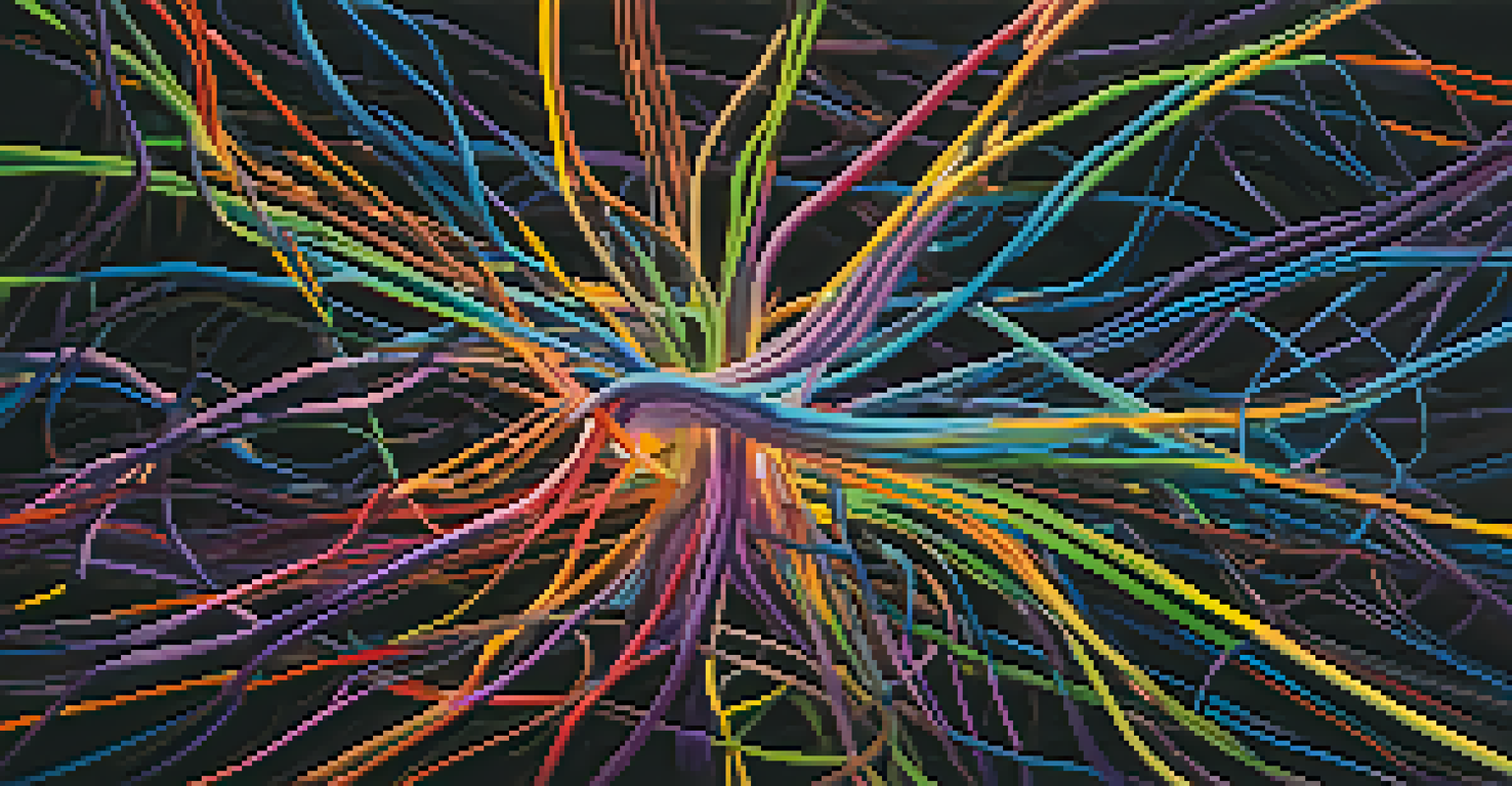Entheogens and Neuroplasticity: Spiritual Implications

Understanding Entheogens and Their Historical Context
Entheogens are substances that have been used for centuries in various cultures to induce altered states of consciousness. Often derived from plants, these substances, like psilocybin mushrooms and ayahuasca, are intertwined with spiritual rituals and healing practices. Their historical significance highlights humanity's quest for deeper understanding and connection to the divine.
The mind is like water. When it's turbulent, it's difficult to see. When it's calm, everything becomes clear.
In many indigenous cultures, entheogens are seen as sacred tools to communicate with the spiritual realm. For example, the use of peyote in Native American ceremonies demonstrates this profound relationship. By exploring these traditions, we can appreciate how these substances have shaped spiritual experiences across time and geography.
Today, as scientific research begins to unveil the potential benefits of entheogens, there's a growing interest in their role not just in spirituality but also in mental health. This intersection of ancient practice and modern science sets the stage for a deeper conversation about consciousness and transformation.
What is Neuroplasticity and Its Importance?
Neuroplasticity refers to the brain's ability to reorganize itself by forming new neural connections throughout life. This remarkable feature allows us to adapt to new experiences, learn new skills, and recover from injuries. Understanding neuroplasticity is crucial because it shows that our brains are not static; they can change and develop based on our actions and experiences.

For instance, when we learn a new language, our brain forms new pathways to accommodate this information. This adaptability illustrates how engaging with our environment shapes our cognitive abilities. Neuroplasticity also plays a vital role in recovery from trauma, as it enables the brain to heal and rewire itself after adverse experiences.
Entheogens and Spirituality
Entheogens have been historically used in various cultures as sacred tools for inducing spiritual experiences and connecting with the divine.
The implications of neuroplasticity extend beyond recovery; they suggest that intentional practices, like meditation or therapy, can promote positive changes in our mental health. By harnessing neuroplasticity, we can actively shape our brains for a more fulfilling and resilient life.
The Connection Between Entheogens and Neuroplasticity
Recent studies suggest that entheogens may have a profound impact on neuroplasticity, potentially enhancing the brain's ability to adapt and change. For example, compounds like psilocybin have been shown to promote synaptogenesis, the formation of new synapses, which is essential for learning and memory. This suggests that entheogens could help facilitate significant cognitive and emotional shifts.
The greatest discovery of my generation is that a human being can alter his life by altering his attitudes.
Moreover, the experiences induced by these substances often lead individuals to introspect and reevaluate their life perspectives. This process can trigger a cascade of neuroplastic changes, allowing for healthier thought patterns and emotional responses. The idea is that by temporarily altering consciousness, entheogens can help break negative cycles and encourage new ways of thinking.
The intersection of entheogens and neuroplasticity opens exciting avenues for therapy and personal growth. By understanding how these substances interact with our brain's plasticity, we may unlock new methods for facilitating healing and transformation in ourselves and others.
Spiritual Experiences Induced by Entheogens
Many users report profound spiritual experiences when under the influence of entheogens. These experiences often include feelings of interconnectedness, transcendence, and deep insights about existence. Such profound moments can shift a person’s worldview, instilling a greater sense of purpose and connection to life.
For example, individuals may describe experiences of feeling one with nature or encountering a sense of higher consciousness. These spiritual awakenings can lead to lasting changes in how one perceives themselves and their place in the universe. This transformation often fosters a sense of unity and empathy toward others.
Neuroplasticity's Role in Healing
The brain's neuroplasticity allows for significant cognitive and emotional shifts, which can be enhanced by the use of entheogens in therapeutic settings.
These spiritual experiences might also promote mental well-being, as individuals integrate these insights into their daily lives. This integration can lead to improved relationships, increased resilience, and a more profound appreciation for life, illustrating how spirituality and mental health are intricately linked.
The Role of Set and Setting in Spiritual Outcomes
The concept of 'set and setting' is crucial when discussing the effects of entheogens on spiritual experiences. 'Set' refers to the individual’s mindset, while 'setting' describes the physical and social environment in which the experience occurs. Both play a significant role in shaping the outcomes of an entheogenic experience.
For instance, a supportive environment and a positive mindset can enhance the likelihood of having a transformative spiritual experience. Conversely, an anxious mindset or a chaotic setting may lead to distressing experiences, often referred to as 'bad trips.' This highlights the importance of preparation and intention when engaging with entheogens.
By creating a safe and nurturing space, individuals can maximize the potential for spiritual insights and neuroplastic benefits. Understanding this dynamic helps individuals approach entheogens with respect and mindfulness, paving the way for more meaningful experiences.
Potential Therapeutic Applications of Entheogens
The therapeutic potential of entheogens is gaining traction in mental health discussions. Research indicates that substances like MDMA and psilocybin can be effective in treating conditions such as PTSD and depression. Their ability to induce neuroplasticity may help patients break free from entrenched patterns of thought and behavior, facilitating healing.
In clinical settings, therapists often guide patients through entheogenic experiences, providing a supportive framework for exploration and integration. This combination of therapy and entheogens can lead to breakthroughs, as patients uncover and process deep-seated emotions and traumas. The results have been promising, indicating that these substances can be a valuable tool in psychological healing.
Set and Setting Matter
The outcomes of entheogenic experiences are heavily influenced by the individual's mindset and the physical environment, highlighting the importance of preparation.
As more research emerges, the integration of entheogens into therapeutic practices may reshape our approach to mental health. This evolving field invites us to consider how these substances can contribute to holistic healing and personal growth, blending ancient wisdom with modern science.
Navigating Ethical Considerations and Future Directions
As interest in entheogens grows, ethical considerations must be at the forefront of discussions. Issues of accessibility, cultural appropriation, and informed consent are critical as we explore the use of these powerful substances. It is essential to respect the traditions and practices of indigenous cultures that have utilized entheogens for centuries.
Moreover, as entheogens enter the mainstream conversation, we must ensure that individuals are adequately educated about their use and potential risks. Responsible integration into therapeutic settings requires thorough training for practitioners and a commitment to safety and well-being for all participants.

Looking ahead, the future of entheogens and their role in spiritual and psychological healing appears promising. Continued research and dialogue will help refine our understanding, potentially leading to innovative treatments and a deeper appreciation for the intersection of spirituality and mental health.